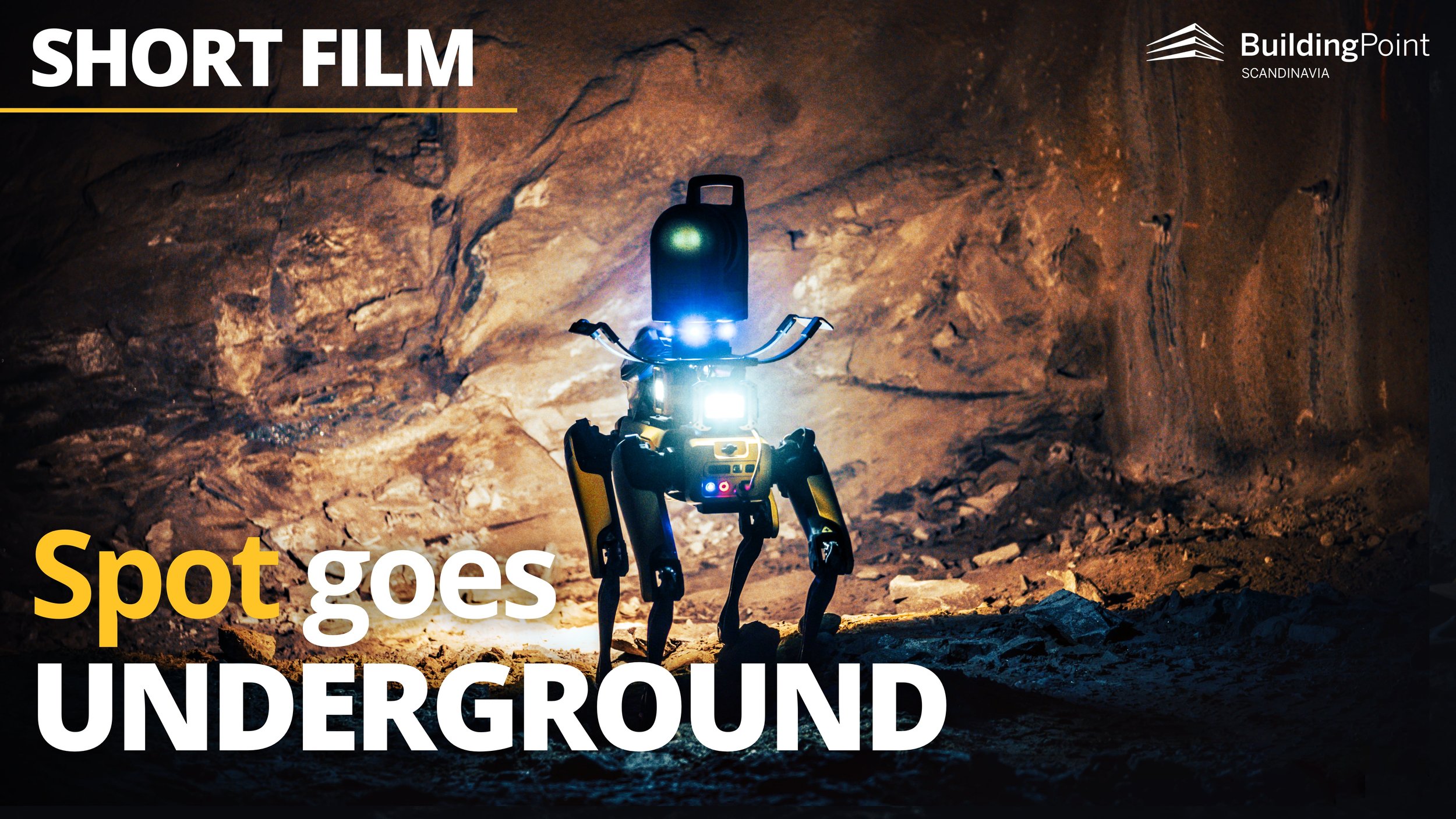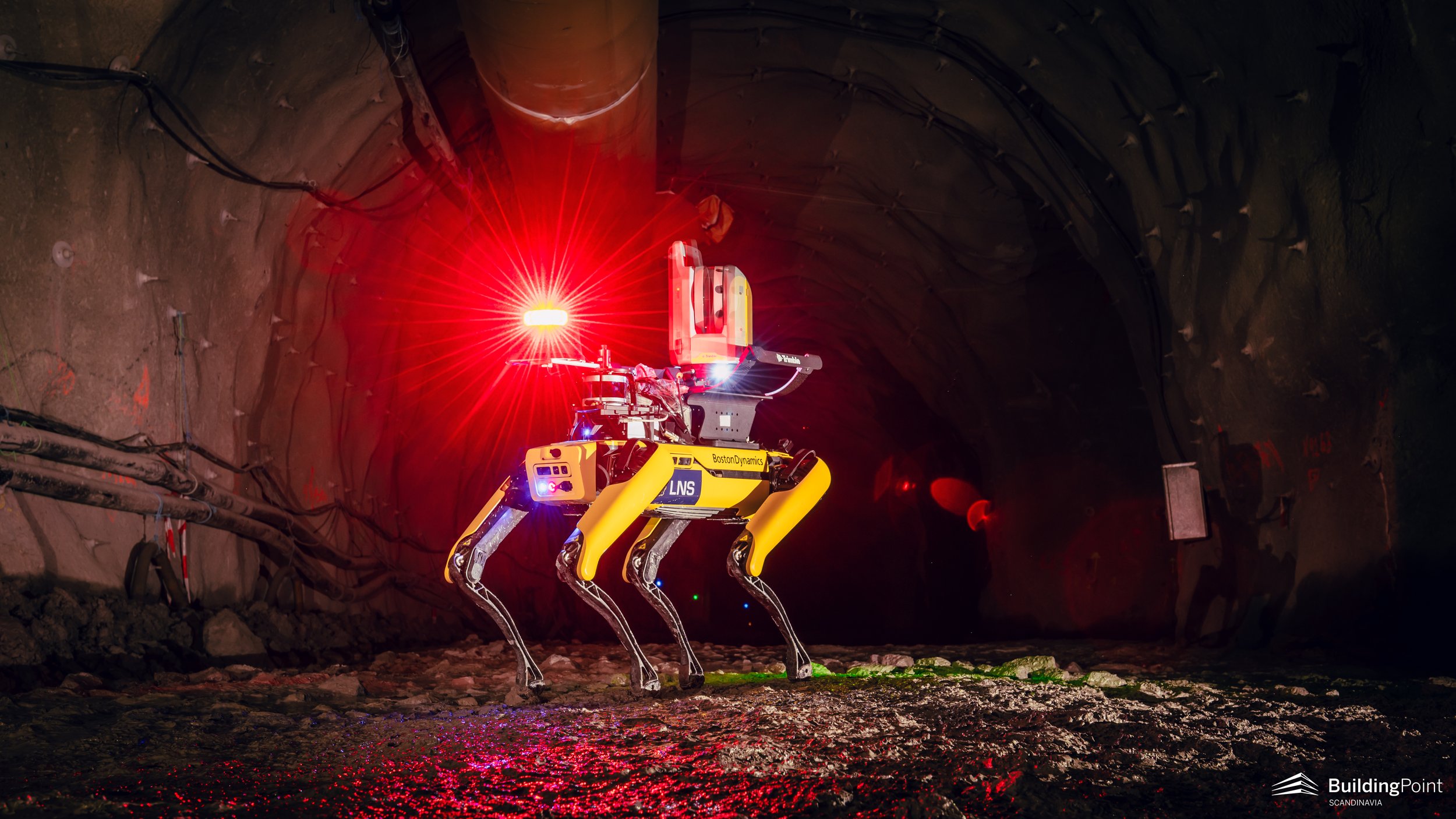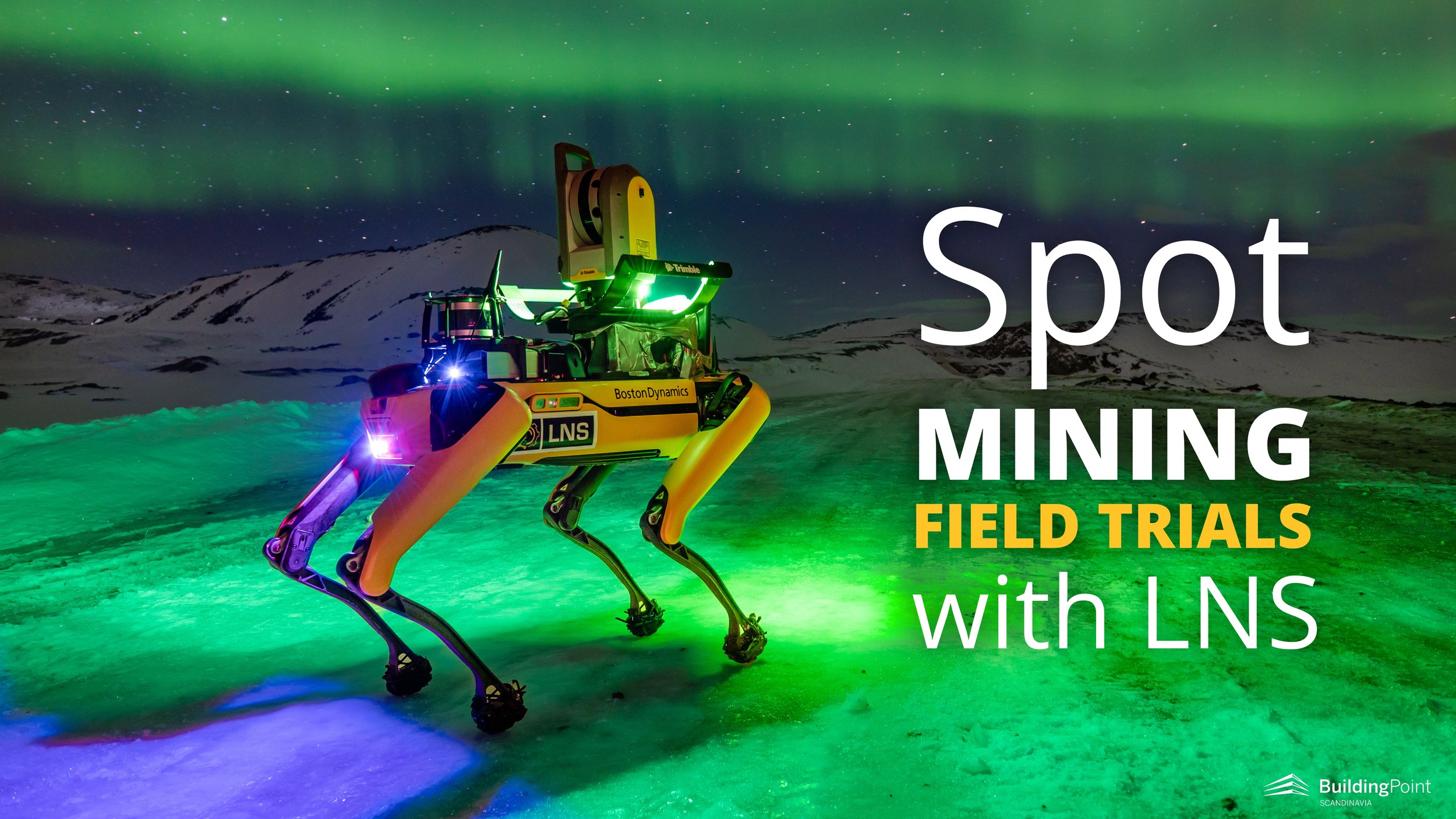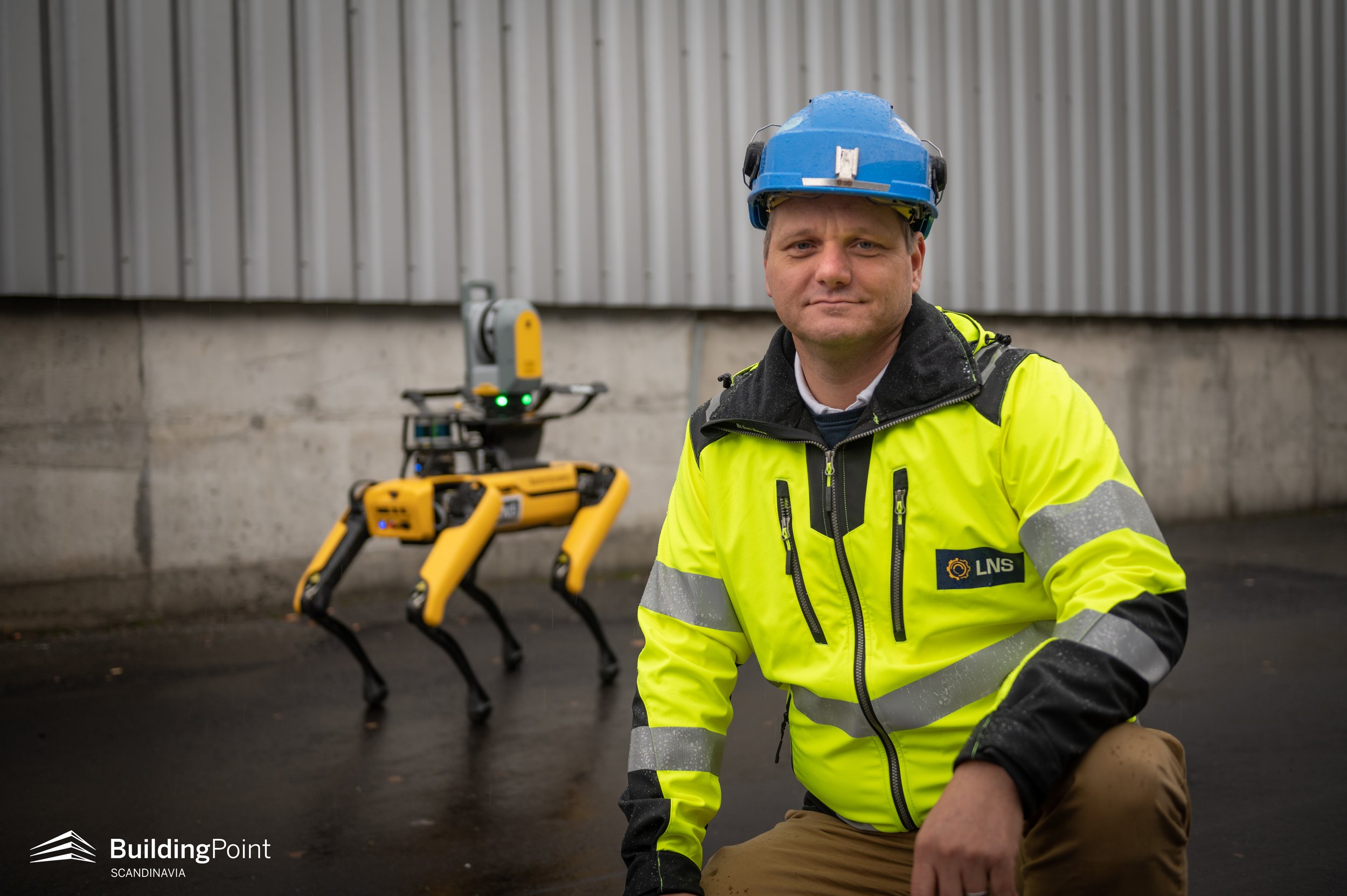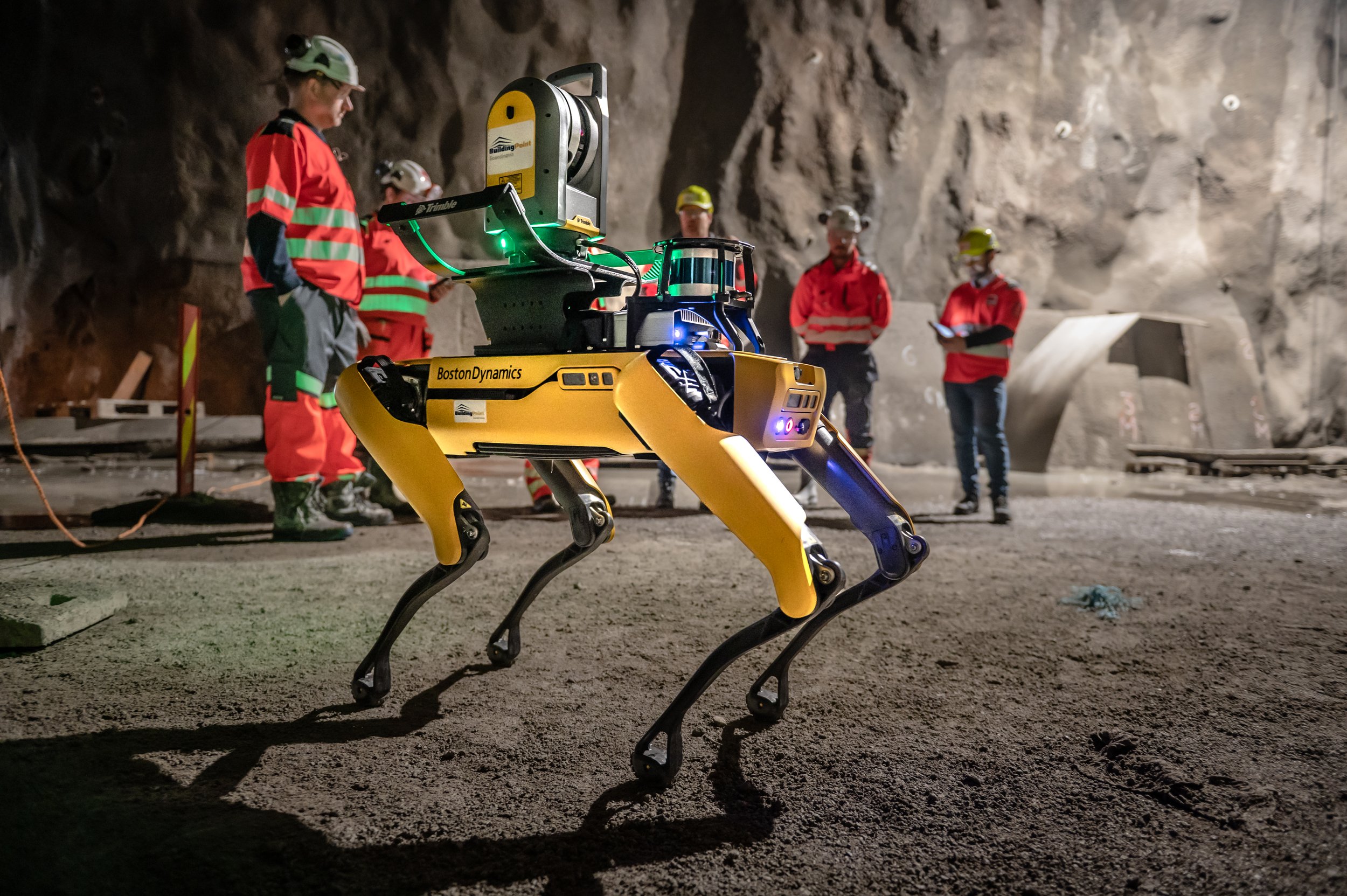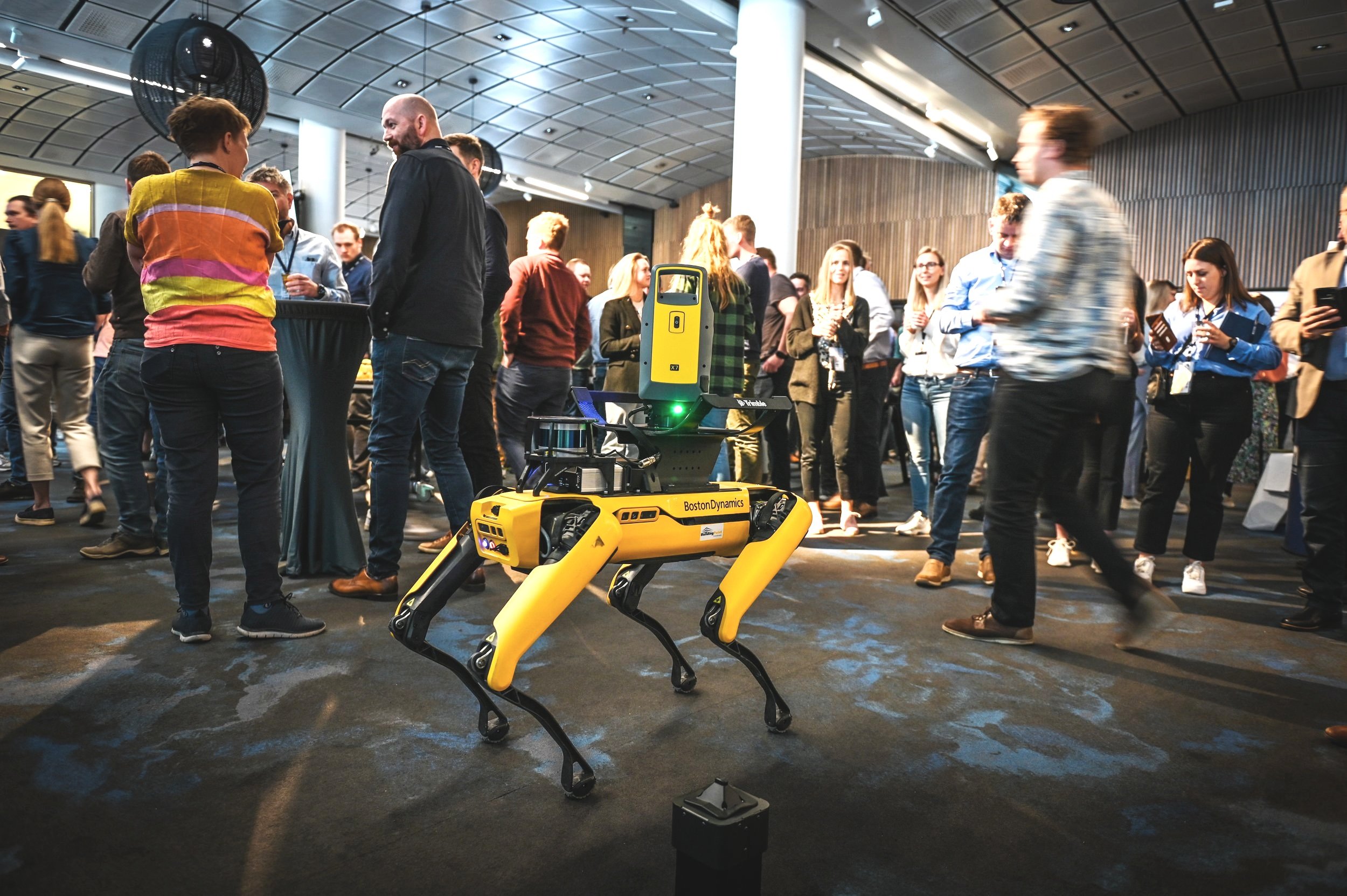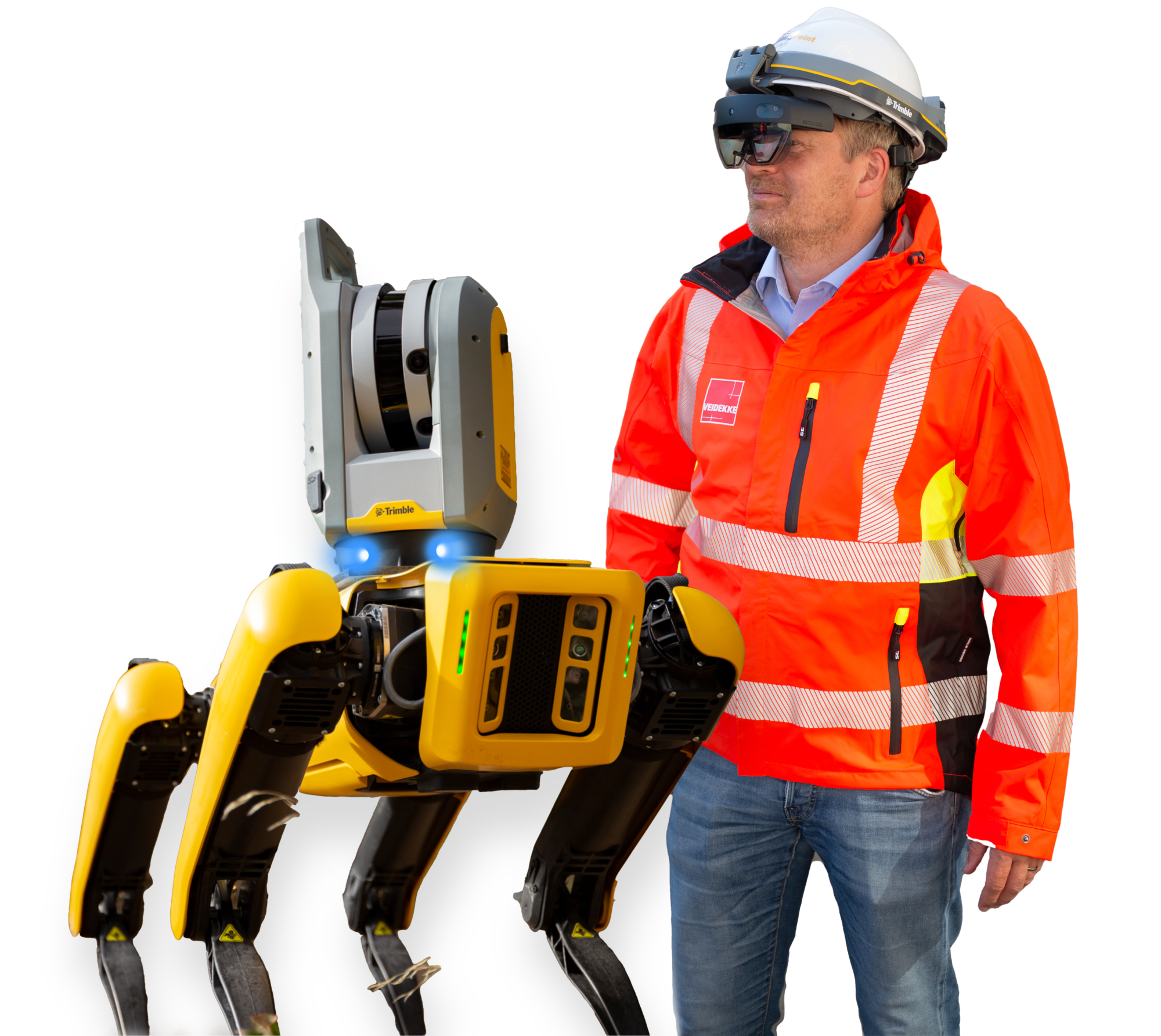Spot making arctic mining safer and more efficient for LNS - First field trials completed!
VIDEO: Mini documentary about the Spot project with LNS!
In Tana, way up north in Norway, almost as far north as you can get in Europe, it is common to see the Northern Lights. That green dancing light on the dark winter sky draws looks even from the locals, and particularly from visitors not used to the phenomenon.
Now, however, there is another possible explanation for the lights you see up in the mountains… It might also be Spot at work for LNS in an open pit mine in Tana!
How can robots help?
Norwegian contractor LNS specializes in mining and tunneling, and they use scan data for quality control, documentation, and a basis for general project decisions.
As tunneling and mining have inherent hazards, all LNS’s operations require managing that risk. In many cases this risk mitigation can delay scanning processes. Additionally, the scanning may require a specialist to travel to remote locations, which adds time and strain on key specialist resources in the company. These aspects also mean added cost or delayed progress and revenue for LNS and their customers.
Having invested in Spot, the robot dog from Boston Dynamics, combined with the X7 scanner from Trimble, LNS has defined a research project aimed at reducing the risk of harm to personnel and, at the same time reducing cost, increasing flexibility in operations!
This research project is divided into two steps:
✓ Step one is focused on the data capture with Spot fitted with the X7 scanner and a 360 degrees camera to find an automated process to gather data during production.
✓ Step two deals with data processing, analysis and reporting to make better project decisions without the need for a specialist to review the data.
PICTURE: Spot in an open pit mine in Tana in Norway. The mine is owned by Elkem.
Photo by BuildingPoint Scandinavia
PICTURE: Spot under the Northern Lights.
Photo by BuildingPoint Scandinavia
The goals and functional requirements.
The project, which has additional funding from the Norwegian Research Council, started in mid-2022 with LNS’s Dirk Niemann as project manager.
With BuildingPoint Scandinavia as the local supplier of the Trimble Spot solutions and key personnel on the development side from Trimble in the team, the project has steamed ahead with an ambitious plan to develop a platform to achieve the following key functions and benefits:
✓ The possibility to operate Spot from a remote location, thus reducing the requirement for the operator to be on site and allowing for scanning in unsecured areas leading to added flexibility, quicker turn-around and increased safety.
✓ The possibility to program Spot to operate autonomously, thus allowing for the site management to carry out scanning on their own initiative, eliminating the need for the specialist to be logged on in real time. This will lead to increased availability of scan data and quicker decision making.
PICTURE: Elkem Tana - open pit mine.
Photo by BuildingPoint Scandinavia
To achieve this, there are several functions and features that need to be in place.
Out of the box, Trimble Spot solutions has integrated software to operate both Spot and the X7 scanner – with Trimble FieldLink software.
However, to operate Spot from a remote location, you also need the Trimble Remote Operations web based platform to connect with Spot, which requires a robust internet connection.
On top of that you need GNSS to have accurate and real time positioning of Spot.
Finally, and probably most importantly, you need to integrate Spot into the operational organization and connect people and technology with well-defined processes. That will address the operational aspects of a scan job, but also transport, maintenance and everything associated with owning and operating advanced technology in a challenging environment, like an open pit mine.
Dealing with the challenges.
Speaking with Dirk Niemann, he has an ambitious and detailed plan to deliver a working product and process.
“Spot is a great tool! However, it turns out that it isn't ready 'out of the box' to work at LNS' construction sites,” he says and goes on to explain that the team have worked hard to implement the core function: a remote operations tool.
PICTURE: From left to right: Anders and Halvard from BuildingPoint Scandinavia and Dirk from LNS preparing Spot for field trials.
BuildingPoint Scandinavia’s project manager and account manager for LNS, Anders Sand-Larsson, working very closely with Niemann, has lived, and breathed this project in the months since the beginning and says: “It's a very tight schedule, but we're dealing with one issue at a time!”
This development has been conducted in a controlled environment in the Oslo region of Norway from LNS’s office in Hønefoss and BuildingPoint Scandinavia’s office near Oslo in close collaboration with the development team from Trimble in Finland and New Zealand, particularly Kim Nyberg and Darren Thomson, but also others.
A project milestone was defined as a field trial in an open pit mine in Tana, north in Norway. This was the first time the team planned to test Spot, the software solutions and associated hardware in real life conditions!
PICTURE: From left to right: Dirk Niemann (LNS), Halvard Pedersen (BuildingPoint Scandinavia), Kim Nyberg (Trimble), Anders Sand-Larsson (BuildingPoint Scandinavia). Testing the remote operations outside the barracks before heading up into the mine.
Field trials – a milestone.
Norwegian company Elkem is the owner of Elkem Tana, an open pit quartzite mine. Located at approximately 70° northern latitude, the mine has polar conditions and is subject to complete darkness during winter. Harsh weather is normal with freezing temperatures and wind. Construction activities in the mine produce dust, gravel, rubble, and temperature variations frequently cause ice and snow to thaw, then freeze again.
On top of that, the area has particularly challenging conditions regarding internet connections and GNSS availability!
This was where the team wanted to bring Spot…
PICTURE: Spot in the open pit quartzite mine in Tana (courtesy of Elkem Tana). Picture by BuildingPoint Scandinavia
To make it a successful field test and meet the milestone targets, LNS invited all the stakeholders to the site. This gave LNS an opportunity to have their local partner BuildingPoint Scandinavia, solution partner Trimble and the developer of the robot, Boston Dynamics, gather in the same location to witness all the events firsthand. This also gave an opportunity to address issues in real time even when core code needed updating.
Brian Ringley, who is Principal Product Manager at Boston Dynamics, explains:
“During our stay here, we've seen how the team has tested all the individual parts of the process. This has been a fantastic experience. Spot is a great robot, but the key thing with technology is to connect it with the people who use it and the business processes that it empowers them to achieve more efficiently.”
The local team in the mine joined in the trial and with local IT in place, all was set for the trials.
“
Spot is a great robot, but the key thing with technology is to connect it with the people who use it and the business processes that it empowers them to achieve more efficiently.
- Brian Ringley, Boston Dynamics
Achievements.
On the evening of the final day in Tana, Dirk Nieman of LNS leans back and thinks back on the three very long days (and nights) spent at the mine and lists all the things that the team successfully covered in terms of functional requirements:
“We have tested internet connection via several different network operators and different technologies.”
“We have tested GPS reception which is very dependent on getting correction data via the internet or our own base station that we have here in Tana.”
“We also wanted to test the 360-degree camera which lets us use Spot to inspect areas that are inaccessible to us.”
“We have, of course, tested the scanning function!”
“We have defined and tested a typical mission that it shall carry out in the mine. It shall walk into a recently blasted area, for example, and scan the site after the masses have been transported out. Then it shall send the data up in the cloud, and for that it needs to have a good internet connection which also lets us remotely operate the robot.”
CHECKLIST
✓ Internet connection
✓ GPS
✓ 360 degrees camera
✓ Scanning
✓ Remote operation
✓ Autonomous operation
✓ Handle the terrain!
Meeting the success criteria.
IMAGE: “The robot has reached target waypoint. Starting scan”. Trimble Remote Operations user interface as seen on a PC. Notice the waypoints set out for Spot. The camera feed is from Spot’s built-in camera and a 360 degree camera mounted on Spot.
Through testing these functions together in field conditions, the team had shown that spot can carry out pre-planned scanning missions autonomously without operator intervention (or even network connection since connections can be difficult to maintain in certain areas of the site) – thus meeting the number one success criteria for the field trial!
Difficult terrain and slapstick humor!
Another key criteria to meet is the robot’s ability to handle different ground surface conditions as described earlier.
Therefore, a significant amount of testing included having the robot navigate areas with gravel and snow combined with black ice.
That turned out to be a big challenge!
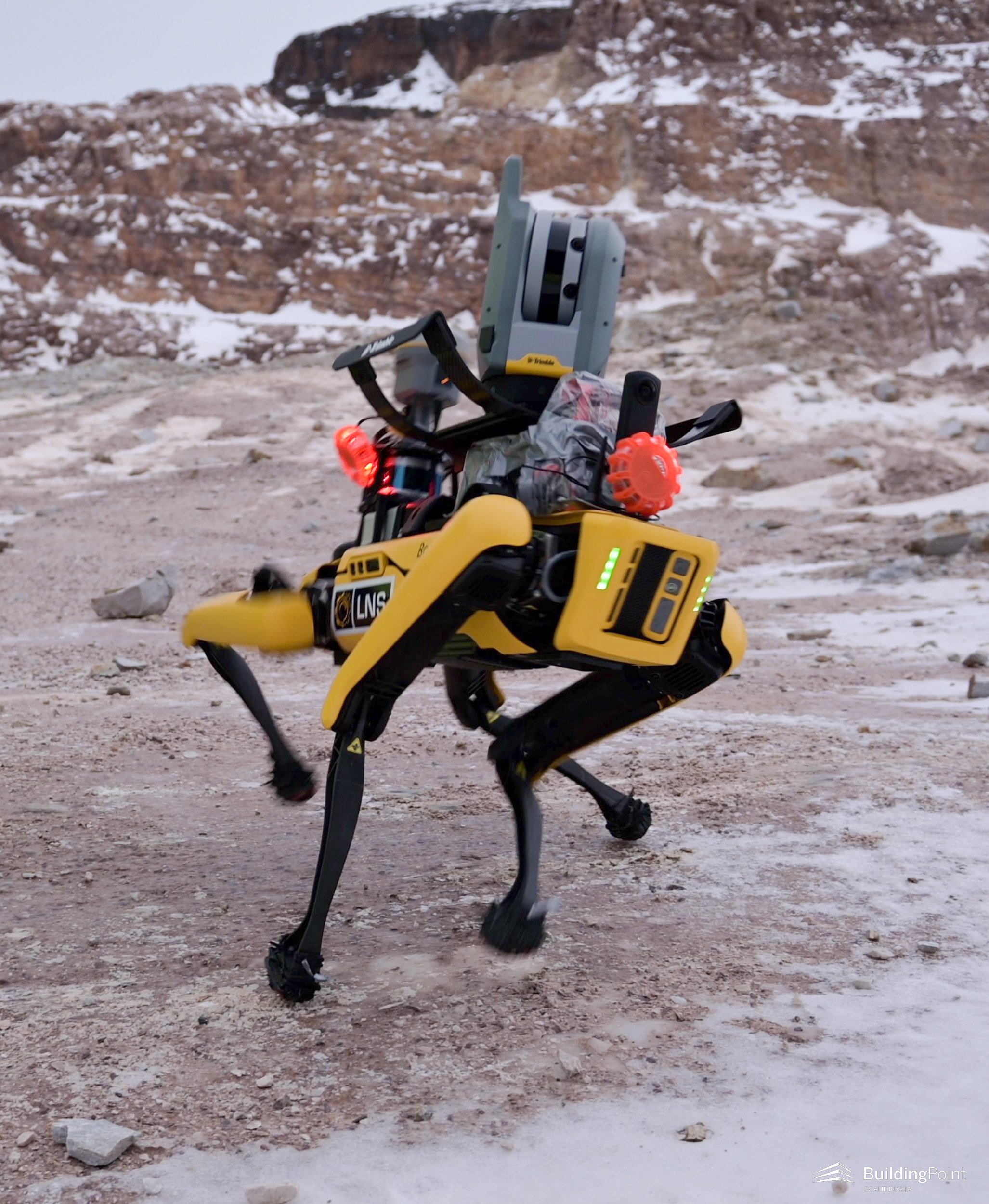

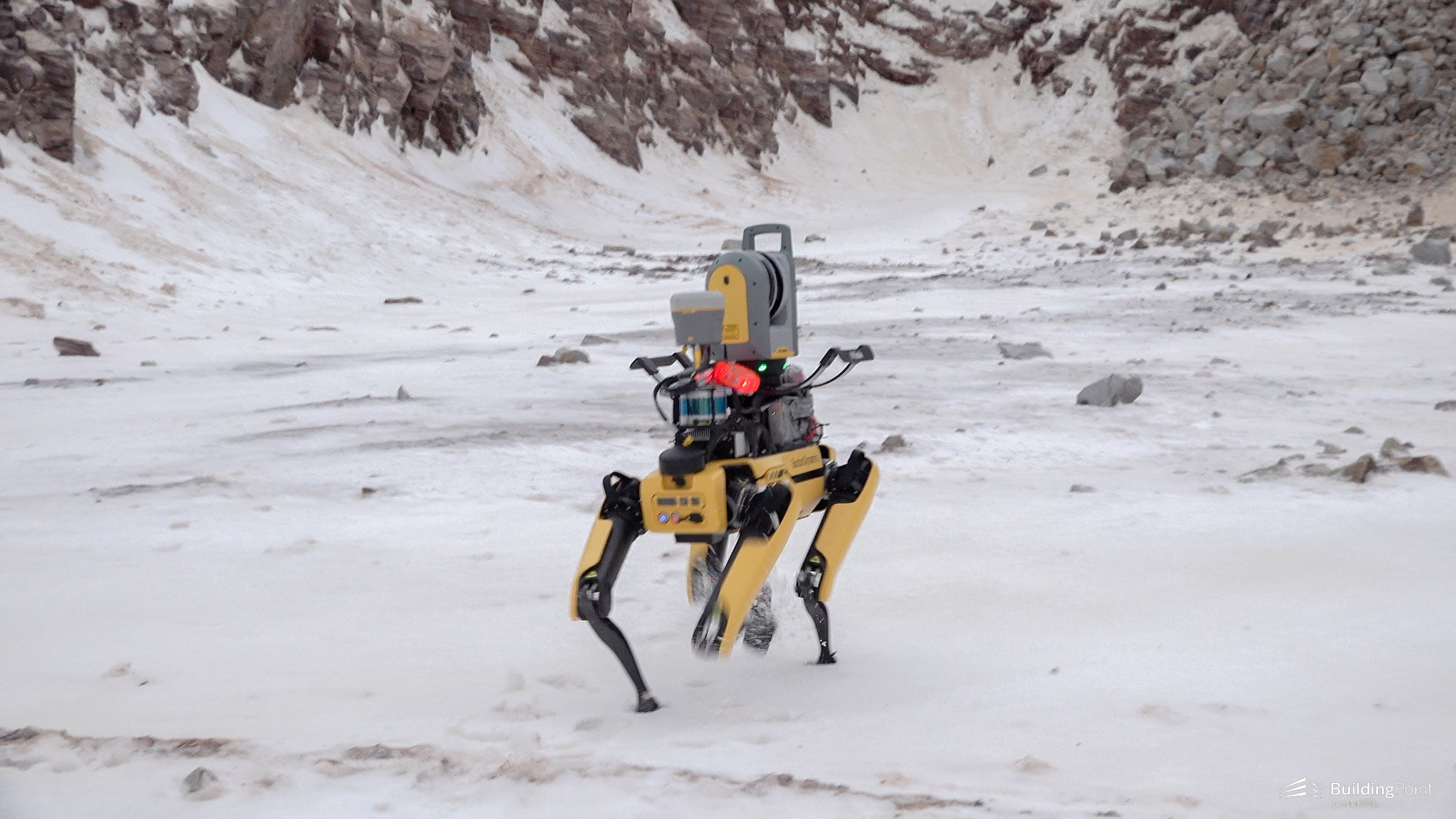
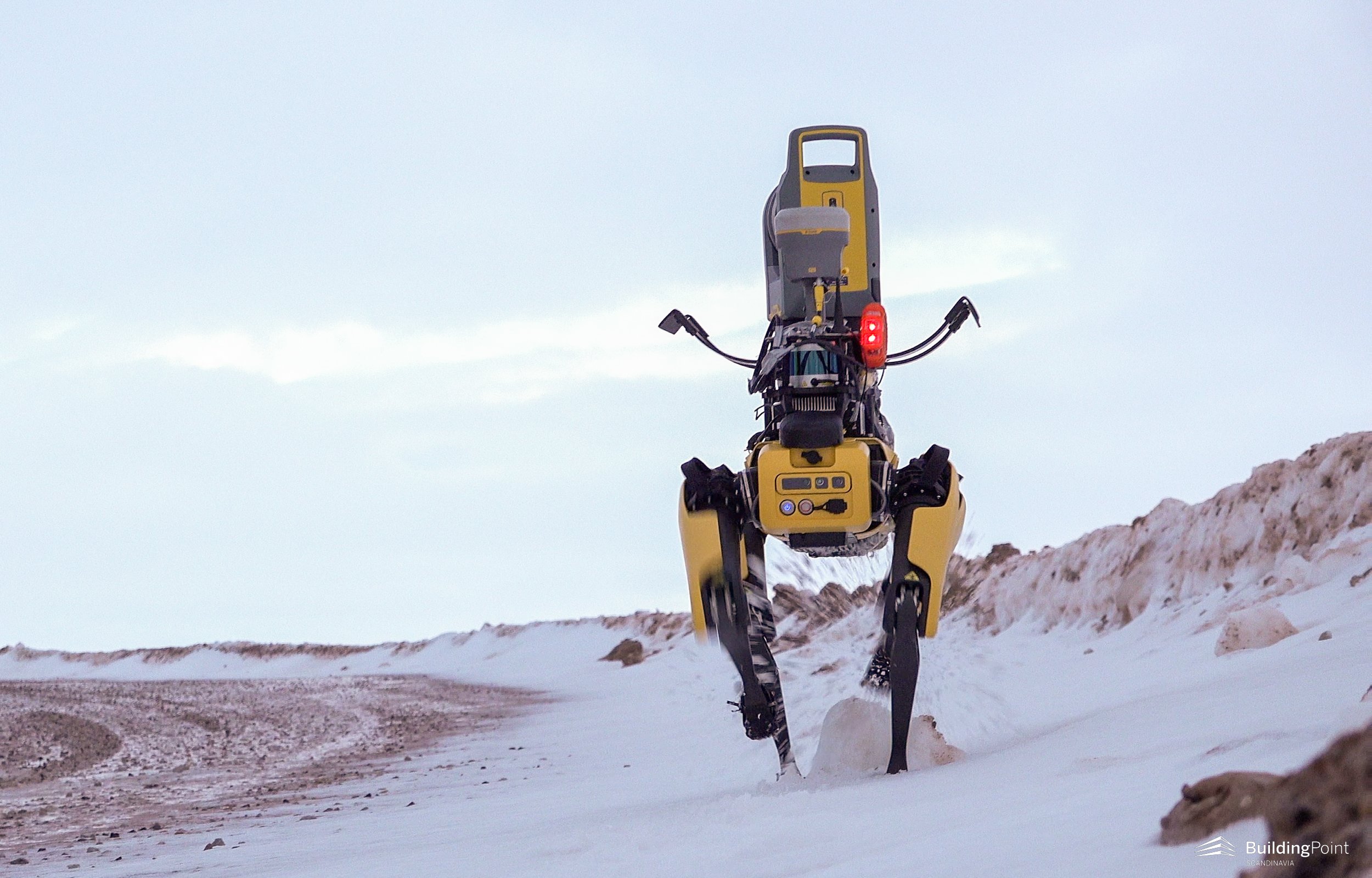
SLIDESHOW: Spot has to be able to handle very challenging environtmental conditions to be successful in the mine. The robot demonstrated an impressive ability to recover when it encountered difficult situations and it was able to carry on with the mission after slipping on the ice.
During one of the tests while the robot was walking autonomously from a pre-programmed mission, it walked into an area with black ice which was in the path to the next scanning position. The team observing Spot warned operator Halvard in the BuildingPoint team, who was at the time sitting in a car some distance away, that the robot was entering a challenging area. The team suggested that Halvard abort the mission. However, considering Boston Dynamics recommendation to keep hands off and let the robot handle himself, the robot was allowed to carry on. (Watch the video to see the event)
The result was spectacular and slapstick-like! The robot flayed its legs and did a 360 degrees rotation, BUT stayed on its feet, demonstrating an impressive ability to handle the situation and carry on with the mission!
During this test, the GNSS receiver was only attached with a magnet to allow for quick changeout of test equipment and it fell off, but regardless, the team was impressed with the result!
PICTURE: Spot outside of LNS’ barracks at the Elkem mine in Tana.
Dirk Niemann, being no stranger to icy conditions in Norway, had early on identified a missing feature of Spot out of the box: the feet come with rubber soles, no options available.
“We built spiked shoes for him,” he says, shrugs and then shows off an ad-hoc design based on a child trolley rubber wheel with spikes attached. It clearly helped Spot get traction on the ice, but the design did not get a sign of approval from the team, rather laughter! But as a take-away from the trial it was clear that this needed to be addressed post trials.
PICTURE: Kim Nyberg (Trimble) and Halvard Pedersen (BuildingPoint Scandinavia) enjoying problem solving indoors before heading out in the freezing cold…
“We have also tested Spot in the snow back in Hønefoss (south in Norway) and if the snow is too deep it doesn't go well. You can't send Spot into areas that haven't been ploughed... that won't work,” Niemann adds and smiles, clearly indicating that he does not intend to send Spot into deep snow in the first place.
Speaking with others in the team, they all seem to agree that the robot demonstrated its ability to handle the terrain and environmental conditions at the mine, while leaving the shoe design by Niemann an open task to deal with upon return to the office.
“
The trip to Tana was a milestone in this project!
Now we have experience with this terrain and experience with real life operations
- Dirk Niemann, LNS
Success factors – getting return on investment.
“The trip to Tana was a milestone in this project! Now we have experience with this terrain and experience with real life operations,” Nieman says.
“A lot of things went well! But we also noted down several things we need to follow up on. And that was great so that we can ensure robust operations with Spot to ensure that Spot also works when he joins the daily operations,” Niemann tells us.
David Burczyk, Construction Robotics Lead at Trimble Inc., was also in Tana with the team and closely monitored the tests. When asked about what it takes to get return on investment with this solution, he says:
“By doing initial trials you can start to test how the workflows get implemented and understand how that starts to become part of the day-to-day workflow. That helps to get buy-in from the top all the way down through the users that are out in the field,” highlighting the importance of the human factor in this project.
“
By doing initial trials you can start to test how the workflows get implemented and understand how that starts to become part of the day-to-day workflow.
That helps to get buy-in from the top all the way down through the users that are out in the field,”
- David Burczyk, Trimble
“Some of the risk factors that companies will see when they start to embrace the new technologies, is just getting a return on their investment and seeing how it plays into what they do. Does it help improve the way that they do their work? Does it provide efficiencies, does it help enforce safety and really allow them to work in a more efficient manner?” he asks rhetorically.
Photos by BuildingPoint Scandinavia
Niemann, who is the person fronting the investment from LNS’ side agrees and combines the ambitions the company has with a reality check:
“One must understand that this is a research project and not everything works from day one...” he says while looking serious, but immediately afterwards the confidence and pride from the achievements by the team shines through, and he adds:
“This project is clearly demonstrating where LNS wants to go in the future!”
In the near future, more field trials are planned. Underground trials are next!
But for now, that green light seen above Tana is still most likely the northern lights. But soon Spot will be back to add even more color - and to contribute to safe working conditions in the mine.
- END -
Thanks to LNS, Elkem Tana, Trimble and Boston Dynamics for supporting this story, on site and after!













